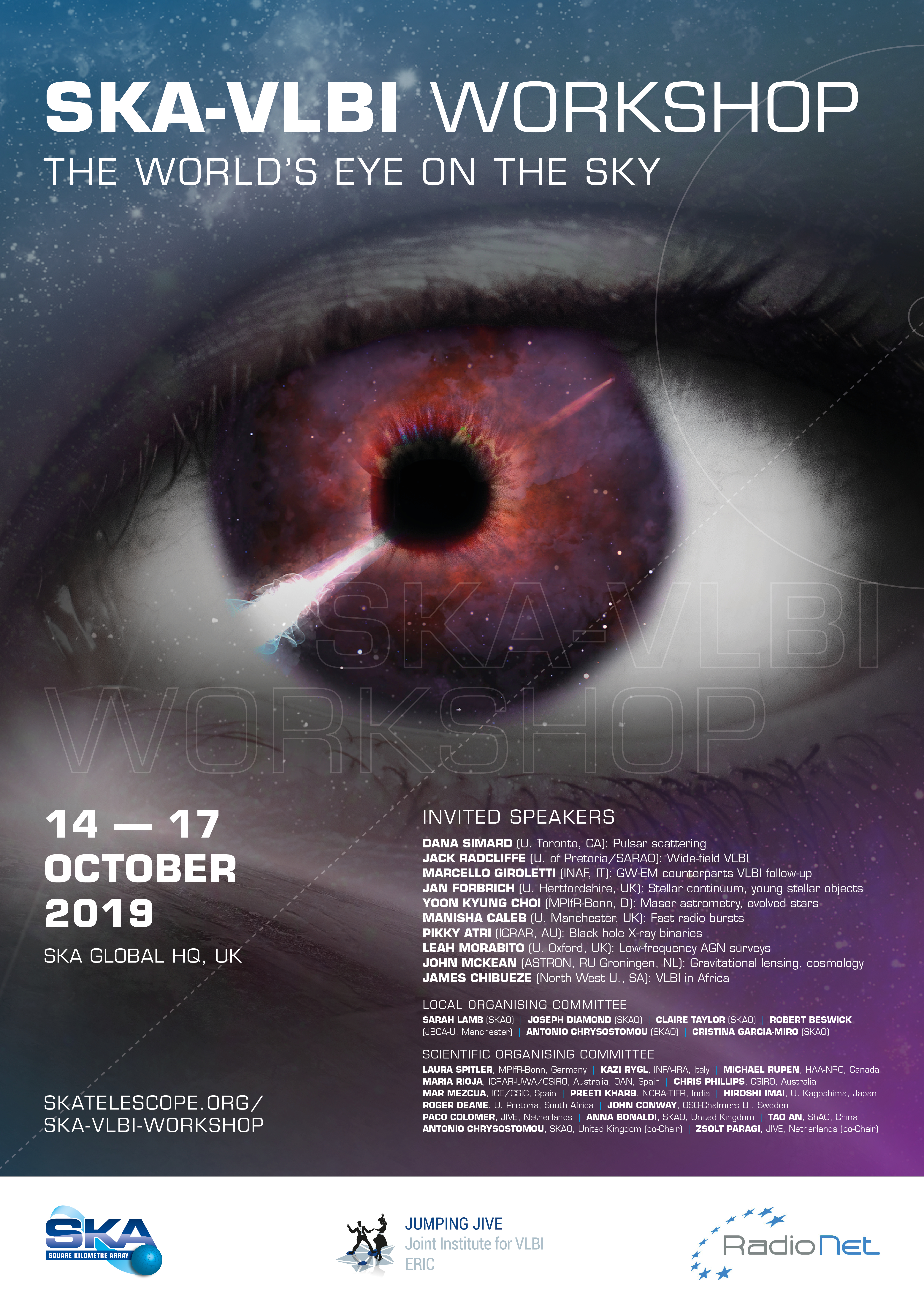
The Square Kilometre Array (SKA) will deploy its first phase telescopes in the mid-2020s. SKA1-low (50-350 MHz) and SKA1-mid (0.35-15.3[24.0] GHz) will have maximum baseline lengths of about 65km and 150 km, respectively. Some of the highest priority science objectives defined by the SKA Organisation - together with the science working groups - however require an angular resolution that can only be reached by current very long baseline interferometry (VLBI) networks, or the full SKA with baselines extending to thousands of km. To exploit the full potentials of the first phase SKA components for very high resolution applications, it has been proposed to coherently phase-up the core of SKA1-LOW and SKA1-MID, and make these powerful telescopes available for global VLBI observations.
In the past 50+ years the VLBI technique has provided the highest angular resolution imaging application in observing astronomy. It provided means to measure apparent superluminal motion in highly relativistic jets from active galactic nuclei (AGN) some 40 years ago, while today we can directly observe the impact of these jets to the neutral and molecular interstellar medium as they drive powerful large-scale outflows - an important form of AGN feedback that shapes galaxies. The superior relative astrometric capabilities allowed us to measure accurate distances and proper motions well before the Gaia era, which helped us to better understand stellar birth and stellar evolution, as well as the structure of the Milky Way. Absolute astrometry with VLBI allows us to measure Earth Orientation Parameters and UT1, and may be used for cosmological studies. In the field of transient science, VLBI has provided the first clue that Nova ejecta can be highly asymmetric, it made possible to resolve (mildly)-relativistic ejecta from Tidal Disruption Events, and provided the tightest constraints on the position of the first ever localised fast radio burst FRB121102.
The aim of the workshop is to introduce the VLBI capabilities and observing modes of the SKA to the community, and present the latest results in the SKA high priority science areas where VLBI will make an impact. We will discuss ideas and possible strategies for major SKA-VLBI Key Science observing programmes, and the impact of global VLBI observations for astronomical research in the future in general. In addition, we will seek input regarding the SKA-VLBI requirements for the future SKA Regional Centres.
